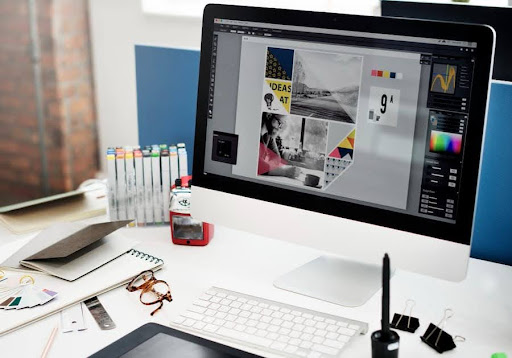Graphic design’ and ‘illustration’ are confusingly used interchangeably, but they serve extremely different purposes. One is communication and comprehension, and the other one is expression and narration. It is only when you understand the differences that you can make the correct choice if you are subcontracting a creative or if you are getting into the visual art industry.
1. Purpose and Communication Goals
The primary goal of graphic design is the dissemination of messages simply and unproblematically. Whether through advertising, branding, or digital platforms, a graphic designer attempts problem-solving and utilitarian simplicity. Illustration, however, favors artistic narrative and emotional conveyance. Even though their fundamental objectives may overlap, their fundamental purposes are different.
A Graphic Design Agency Manchester would be concerned with visual form and strategy, while illustrators seek to impart mood and narrative through expressive, usually personalized, visual artworks.
2. Tools and Software Used
Graphic designers would generally employ computer applications with controls such as Adobe Illustrator, Photoshop, InDesign, and layout applications such as Figma. These assist in generating complex, uniform, and interactive visuals. Illustration is more free-form and expressive.
Design is oriented towards visual order and communication, yet illustration facilitates personality, emotion, and freedom of expression. The stylistic difference influences the way each is created and used in visual communication.
3. Visual Style and Aesthetic Approach
Graphic design prefers clean, structured, and straightforward visuals assisted by grids, type, and brand identity. It prefers balance, symmetry, and simplicity. Illustration allows far greater variation in individual style, from loose to very detailed or abstract. Illustration is more expressive and spontaneous in character. Design is a quest for visual communication and order, while illustration involves individuality, emotion, and creativity. This difference in character affects the way each of them is perceived and used for visual communication.
4. Career Paths and Industry Roles
Graphic designers typically work within branding, advertising, web, or print media and may have career titles of UI designer or visual designer. Their careers are more team-based within marketing or product teams. Illustrators will freelance or specialize in areas such as editorial art, book illustration, or animation.
Their career paths are more solo and style-focused and dependent on an individual portfolio rather than one that fits within formal corporate job titles. Designers mature in structured teams, while illustrators develop careers based on personal style. This makes design careers more cooperative and company-centered and illustration careers more independent and expressive.
5. Client Expectations and Deliverables
Graphic designers use briefs and brand guides. Clients need accuracy, consistency, and images that are for tactical reasons like engagement or awareness. Deliverables would typically be logos, websites, or brochures.
Illustrators are selected by their distinctive style. Work is interpretive, with personality or atmosphere. Although they work in briefs, the level of creative scope is greater. Clients expect original work, with deliverables such as storyboards, book covers, or editorial.
6. Flexibility vs. Specialisation in Work
Graphic designers have to switch industries, from technology to fashion, and accommodate their look to the brand. Their strength is adaptability and repetition. Illustrators tend to have a signature style.
Clients hire them because they require that specific flair. While designers have to change styles over and over again, illustrators are rewarded by being deeply immersed in one specific visual style. That variety defines the manner in which each establishes their career and client base.
7. Process of Concept Development
Designers have an intense process of research, wireframes, mockups, and adjustments after feedback. Clarity and usability are their goal. Illustrators start more loosely, with sketches and developing ideas through creativity and intuition. They both proceed after idea development, but illustration is less impromptu.
Design is ordered and logical in process, yet illustration may be emotional and intuitive in the first drafts. This difference in process demonstrates the values of design function and the values of illustration freedom. While design adheres to structure and reason, illustration does the reverse with feeling and intuition.
Conclusion
Graphic design and illustration can look quite alike on the surface, yet in processing, application, and use they are quite distinct. One is all about function and communication, and the other lives on creativity. Understanding these differences aids in selecting the ideal creative for your needs or future path. Clarity of purpose leads to better results.

